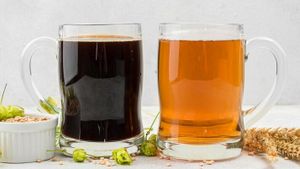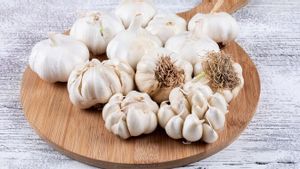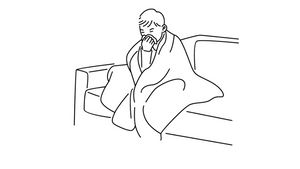YOGYAKARTA - According to medical science, enzymes are protein molecules that function as catalysts. The existence of the role as a catalyst allows enzymes to trigger various chemical response processes in the body of living things. So, what is the way enzymes work? Follow the explanation below!
According to the Big Indonesian Dictionary (KBBI) online, enzymes are complex protein molecules, which are produced by living cells and work as catalysts in various chemical processes in the body of living things.
Enzymes are created from folded proteins as a complicated form and after that appear throughout the body. The presence of chemical response makes the body always live depending on the things enzymes do.
The enzyme carries out a critical task to reduce the reaction activation energy, namely, the amount of energy that must be included so that the reaction begins.
The enzyme works by tying the reactant molecule and holding it properly so that the process of breaking the chemical bond and making bonds takes place more easily.
The following is a description of the method of enzyme work, structure, and use, as reported by emodul.kemdikbud.go.id, Friday (29/10/2021).
Enzyme Nature
Enzymes have the following properties:
There are 2 theories regarding enzyme work methods, namely lock theory and key (lock and key) as well as induced match theory (induced fit).
According to this theory, an enzyme only works for one type of substrate that will be tied to the active side. The enzyme is likened to a lock and the substrate is likened to a key.
The enzyme joins the substrate to form an enzyme-substrate complex. Substrates are converted into products after that free from enzymes.
For this theory, the cofactor or enzyme activation will be related to the alosteric side by changing the form of the enzyme's active side so that it can bind certain substrates.
Substrates after that are changed to products and released from enzymes. Enzymes can be reused for further substrates.
Enzyme Structure
The enzymes are composed of 2 parts that couple to each other, namely apoenzim and cofactor.
1. Apoenzim
Apoenzymes are parts of enzymes in the form of protein compounds that have heat resistance properties. Apoenzymes consist of the following parts:
2. Active Side
The active side is related to the substrate. Substrates are substances that will be used as products. The active side can be disturbed by competitive inhibitors with the same structure as substrates.
Inhibitors will prevent substrates from connecting with enzymes.
3. Alosteric side
The alosteric side is related to the coenzim (enzyme cofactor). The alosteric side can be disturbed by the arrival of non-competitive inhibitors who have the same structure as the cofactor.
Inhibitors can prevent enzymes from combining with substrates.
4. Cofactor/Enzyme Activator
The cofactor is an enzyme part in the form of a non-protein compound and is heat resistant. The enzyme that has been associated with a cofactor is called a holoenzim.
Kofactor can replace the shape of the active side so that it can be related to the substrate. enzyme cofactors are distinguished from:
5. Koenzim
Koenzim is a cofactor in the form of organic compounds (vitamins) that are non-covalent with enzymes. For example, the NAD+ coenzim.
6. Prosthetic Cluster
Prosthetic clusters are cofactors in the form of inorganic (mineral) compounds that are covalently related to enzymes. For example, Cl- and Ca2+ in amilase enzymes.
In addition, there are recommendations for some 'Remembering Added Food' in order to maximize the ability of your brain.
So after knowing how enzymes work, look at other interesting news on VOI.ID, it's time to revolutionize news!
The English, Chinese, Japanese, Arabic, and French versions are automatically generated by the AI. So there may still be inaccuracies in translating, please always see Indonesian as our main language. (system supported by DigitalSiber.id)









